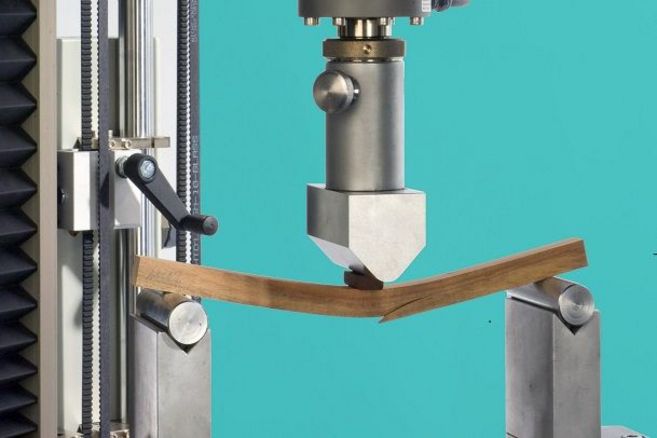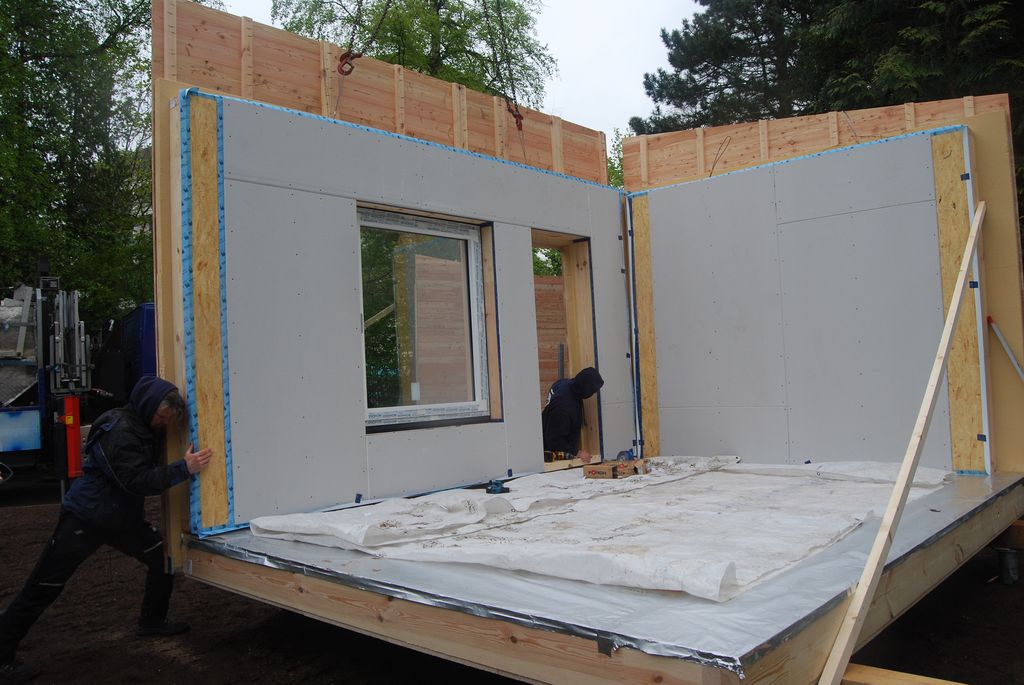Project
How do building materials affect indoor air quality?

Elaboration of an objective method considering the special character of wood and wood based panels for the evaluation of their impact on indoor air quality
Wood products emit volatile organic compounds (VOC) in different compositions and amounts. This project aims to develop an objective process that allows clear conclusions about the impact of VOC emissions of different building products on indoor air quality in real installation situations.
Background and Objective
Many biogenic and anthropogenic processes emit volatile organic compounds (VOC) into the environment. Humans, animals, soils and the sea, as well as plants like trees and their woods, belong to the natural sources. Wood and wood-based panels are important building products. Their use should be further increased in accordance with the scheme of the Federal Government called “Aktionsplan zur stofflichen Nutzung nachwachsender Rohstoffe” (Action plan for the material use of renewable natural materials). The building products are considered a potential source of VOC indoors because they might be installed with a large surface area. Against this background, and due to the fact that humans spend most of their lifetime indoors, the question of how VOC from building products affect indoor air quality is raised.
Emissions of wood, wood-based panels and products from these materials are well studied. Previous studies on VOC in indoor air show the high complexity of the involved processes and interactions. Particularly in the case of wood and wood products and their specific installation, differences in the adsorption capacities of the various building materials are to be expected. At present, the results of the emission test of a building material are calculated to the intended use to assess the later indoor air quality.
Consequently, the question of the significance of emission determination of individual components as found in real buildings will be answered. For this reason such interactions (synergistic and antagonistic) and influences are investigated extensively.
Within the research project the emissions of individual building materials (simple combinations and building walls and floors) will be compared under controlled conditions in test chambers with installation situations in model rooms and their indoor air quality. Based on the results, it should be possible to correctly evaluate and prioritize the different influencing factors.
Target Group
- User/consumers (planners/designers and builders)
- industries (manufacturer/producer and processors)
- authorities
Approach
In order to implement the project, we first defined the exact scenario for the simulation of real conditions indoors. All things considered, we build four different building walls (and floors) and test them in the laboratory as well as in real buildings. We choose wall constructions which are often used, according to the opinion of the project partners and the construction companies. We examine the building materials used to determine the extent to which they comply with the requirements of the Committee for Health-related Evaluation of Building Products (Ausschuss zur gesundheitlichen Bewertung von Bauprodukten – AgBB). In addition, basic conditions such as temperature, humidity, air exchange, duration of the test and possible test cycles with changing boundary conditions are defined.
We test the building walls (and floors) over several months to evaluate whether a statement about the medium term expected indoor air concentration of the VOC is possible. The same applies to a selection of tests in test chambers. In addition, an odour test (according to ISO 16000-28 and ISO 16000-30) is carried out.
Conclusions for a future consideration of wood products in the installed state with regard to their emission assessment are to be drawn from results. Furthermore, it can be used to derive recommendations for users, industry, authorities, tendering and contracting. It should also be assessed whether a statement about the long-term behaviour of the materials is representative of a study over the normatively scheduled period of 28 days.
Our Research Questions
Do the results of emission tests of individual building materials deliver sufficient information for the assessment of the air concentrations in real indoor rooms?
Is it possible to improve the information about the expected concentration of the indoor VOC in real buildings after testing the constructions or adjusting the test conditions in real-life installation situations?
Is a 28-day emission test representative of the long-term performance of the material?
Results
The results from the emission chamber tests showed that solid softwood emitted primarily terpenes whereas wood based panels released also aldehydes and organic acids. Terpenes and aldehydes were mainly measured in the air of the model houses. The VOCconcentrations in the model houses basically decreased, but were influenced by the outside and inside temperature. As a result, the concentrations increased in spring and summer at warm temperatures, however they did not reach their initial values.
In contrast, the correlation between relative air humidity and concentration was poorer. Also the air exchange rate had an influence on VOC concentration: For a few weeks, the ventilation systems in the model houses were operated at varying air exchange rates. A setting change from 0 h-1 to 0,5 h-1resulted in lower concentrations. This effect was poorer at a change from 0,5 h-1 to 1 h-1.
In ordert o validate the correlation between results from products emission tests and room concentrations, theoratical concentrations were calculated. For each model house the results of the 28th day from chamber testing of all wall construction products were sum up. Different loading scenarios were used. These results were compared to the average of weekly measured room concentrations. None of the calculation methods gave consistent results with the measured room concentrations for all VOC-groups. A derivation of all VOC as well as the TVOC as a sum value does not appear possible and sensible, since realistic values cannot be represented with this method. A validation of the respective VOC groups would have to be differentiated. In addition, many of the theoratical room concentrations overestimated the measured VOC concentration. Although it was evident that the building materials used and their emission potential have an influence on the room concentration, this was only representable when comparing the houses with one another. Conclusions about the measured room concentrations could not be derived from the 28-day value of the chamber test. Therefore, the exclusive consideration of the product emissions cannot decide on the safe usability of a product.
Involved external Thünen-Partners
-
Fraunhofer-WKI
(Braunschweig, Deutschland) -
Verband der deutsche Holzwerkstoffindustrie e.V.
(Gießen, Deutschland) -
Deutsche Säge- und Holzindustrie, Bundesverband e.V.
(Berlin, Deutschland) -
Bundesverband Deutscher Fertigbau e.V.
(Bad Honnef, Deutschland) -
81fünf high-tech & holzbau AG
(Lüneburg, Deutschland) -
Deutscher Holzfertigbau-Verband e.V.
(Ostfildern, Deutschland) -
Informationsverein Holz e.V.
(Berlin, Deutschland) -
Studiengemeinschaft Holzleimbau e.V.
(Wuppertal, Deutschland) -
Verband Holzfaser Dämmstoffe e.V.
(Wuppertal, Deutschland) -
ZimmerMeisterHaus Service&Dienstleistungs GmbH
(Schwäbisch Hall, Deutschland) -
Holzbau Deutschland im Zentralverband des Deutschen Baugewerbes e.V.
(Berlin, Deutschland) -
Deutscher Holzwirtschaftsrat e.V.
(Berlin, Deutschland)
Funding Body
-
Federal Ministry of Food und Agriculture (BMEL)
(national, öffentlich)
Duration
4.2016 - 12.2019
More Information
Project funding number: 22008514
Funding program: FNR
Project status:
finished




![[Translate to English:] Logo des Bundesministerium für Ernährung und Landwirtschaft](/media/allgemein/logos/BMEL_Logo.svg)